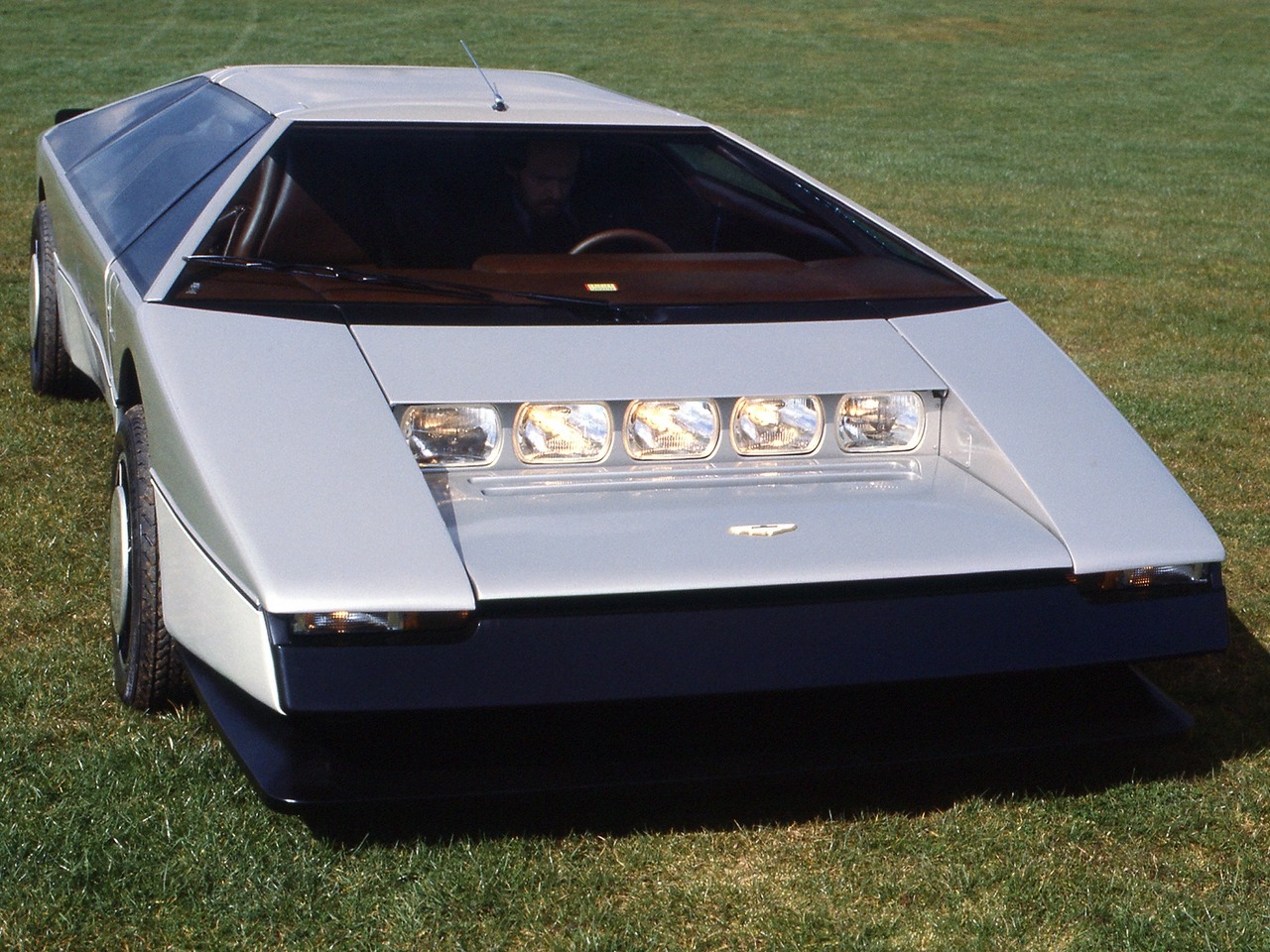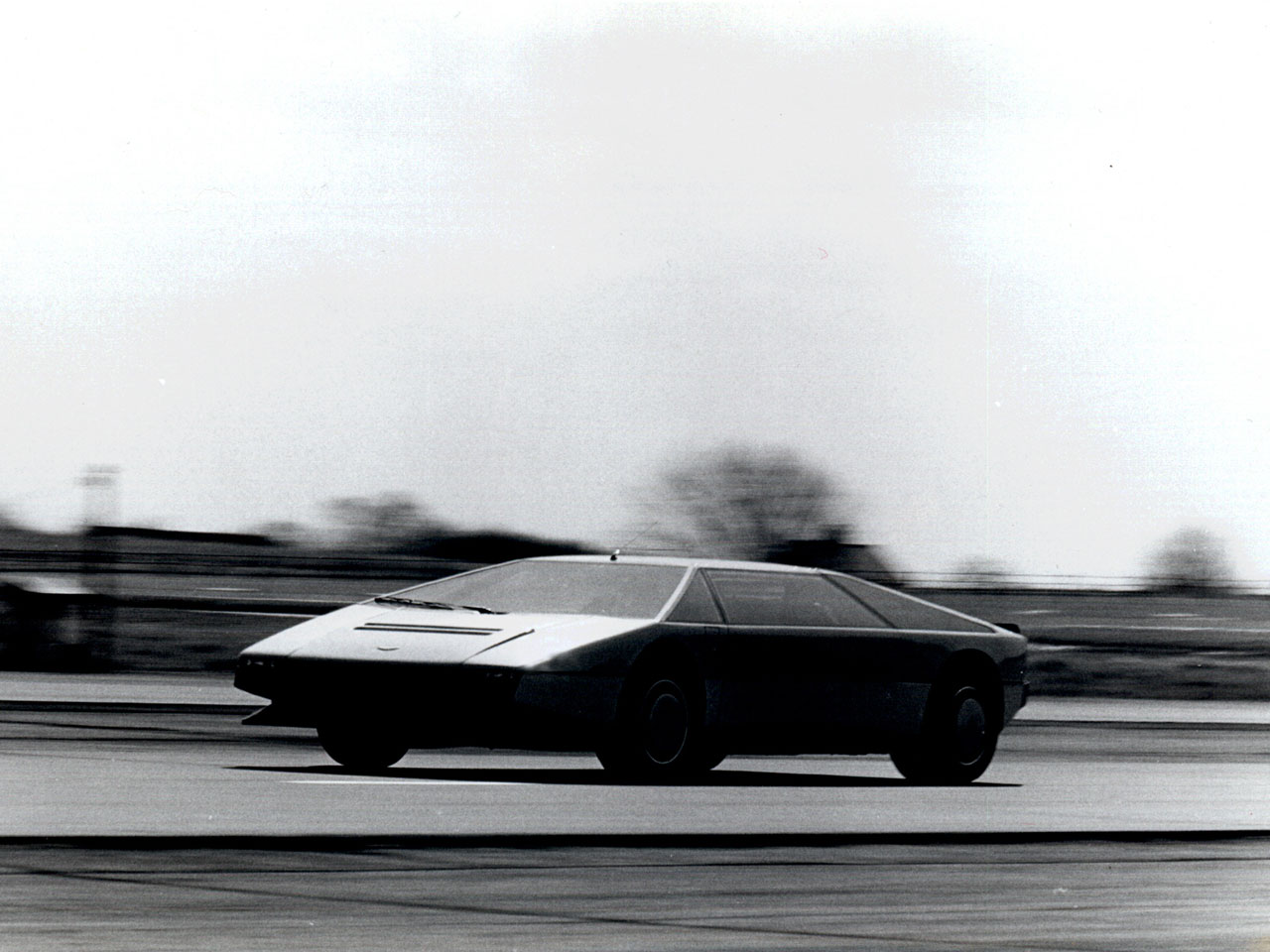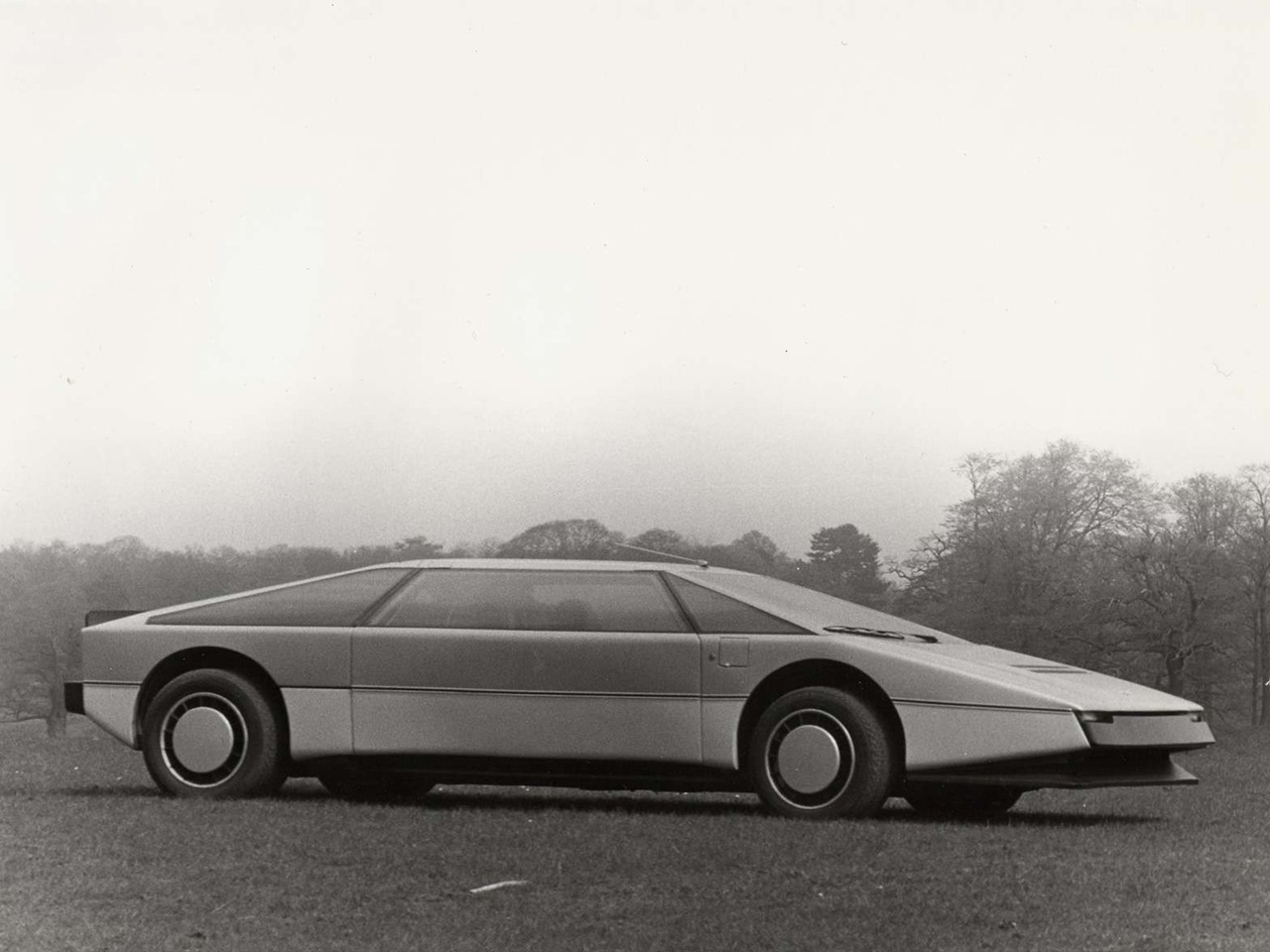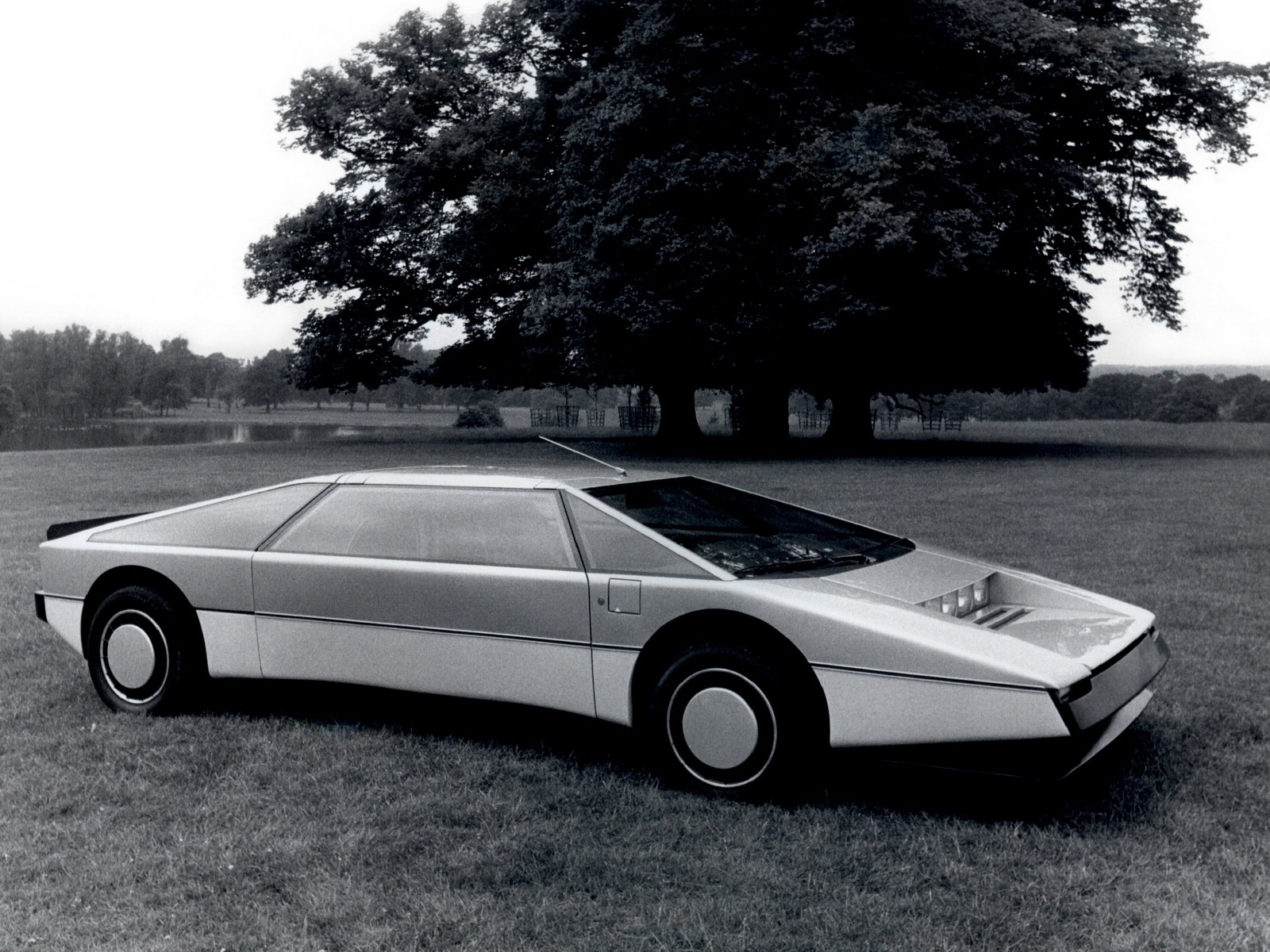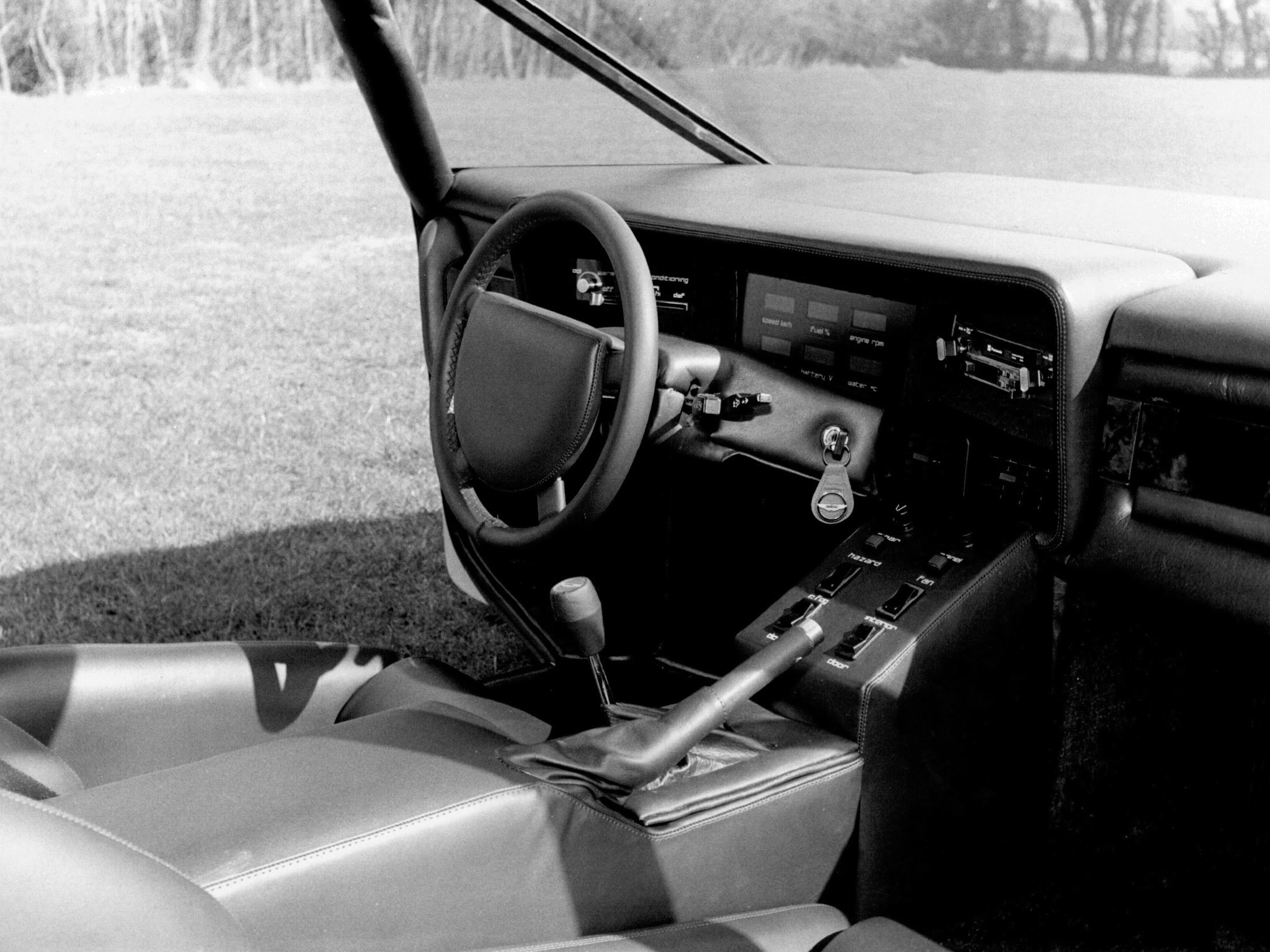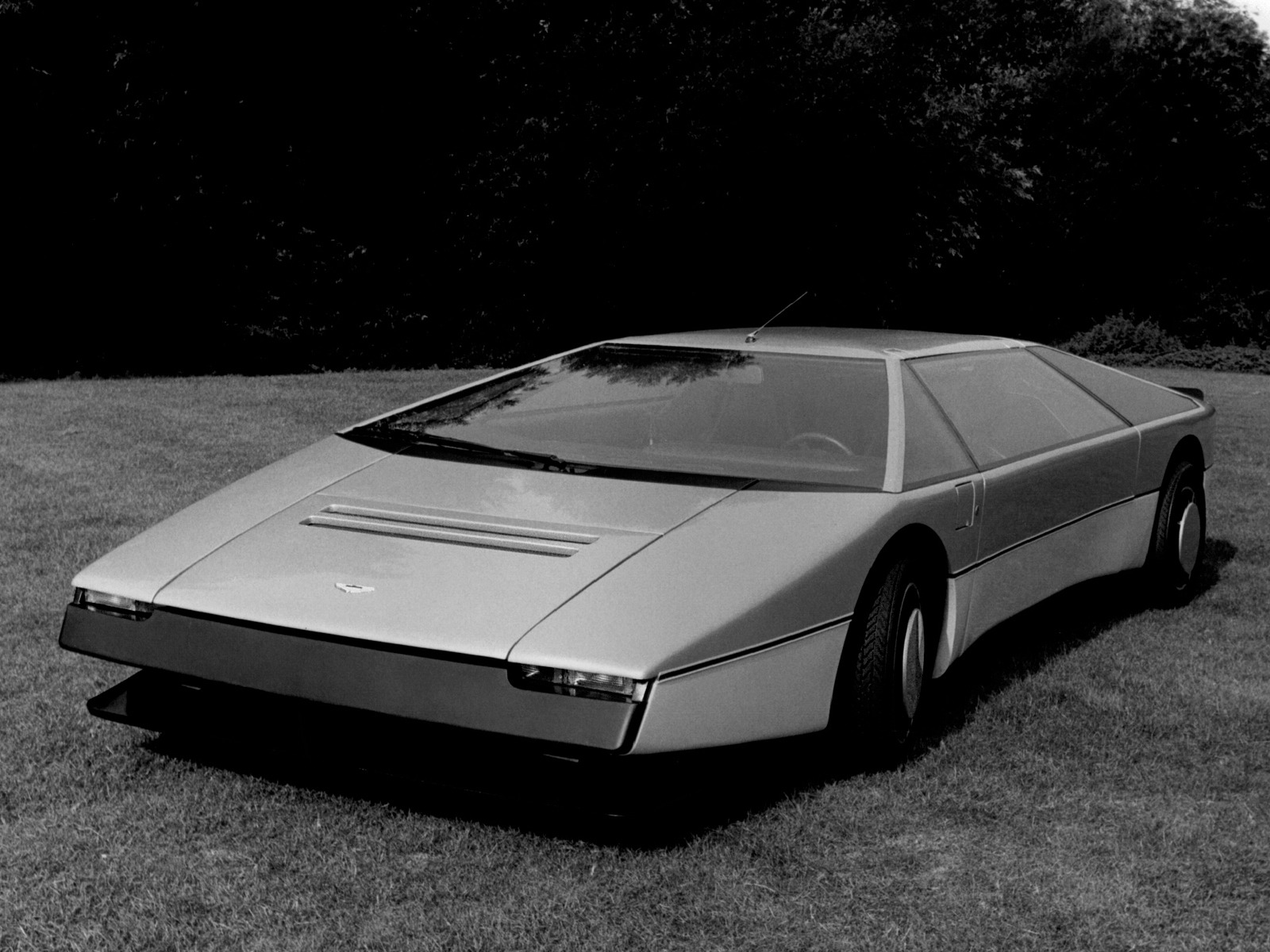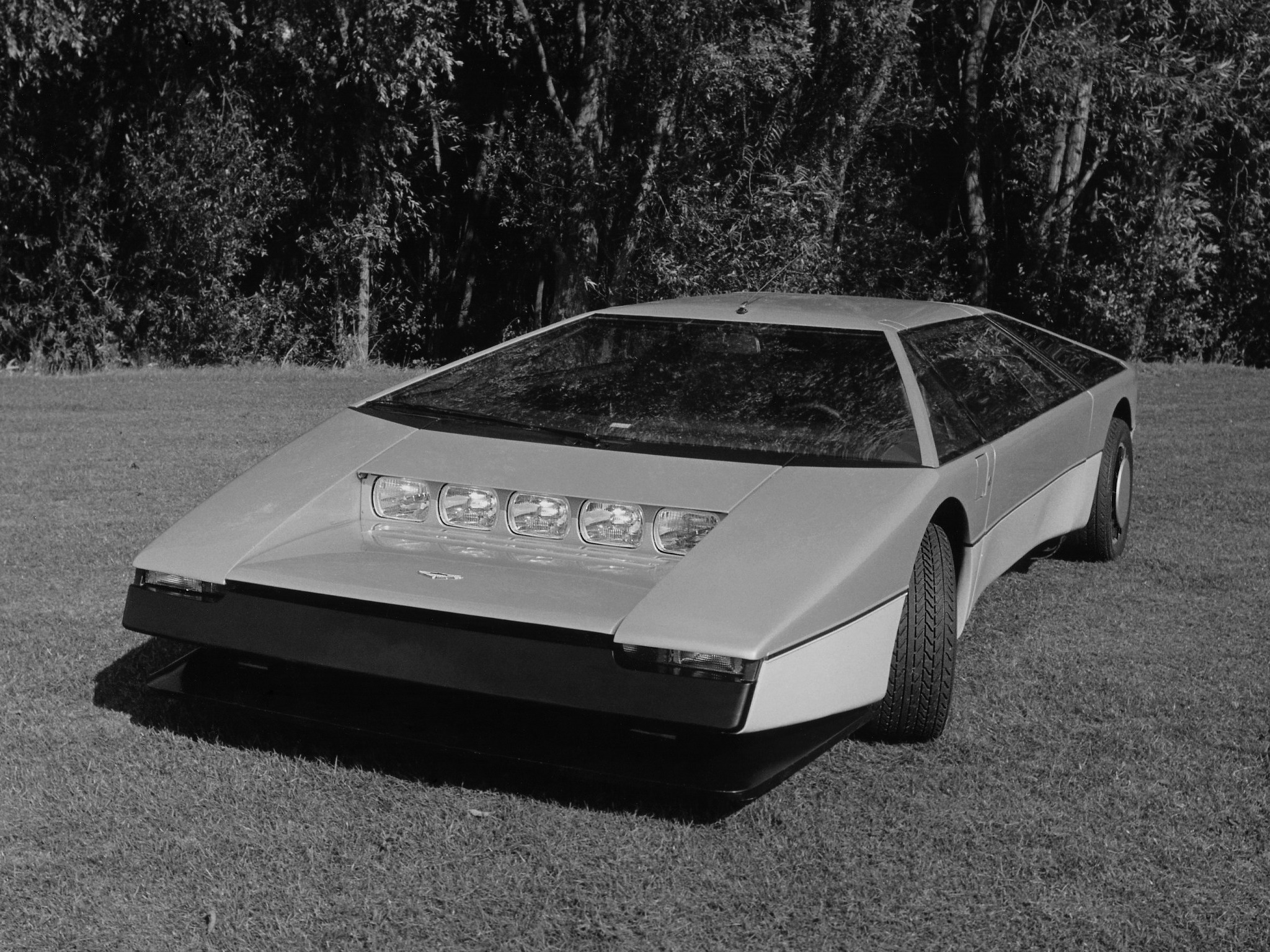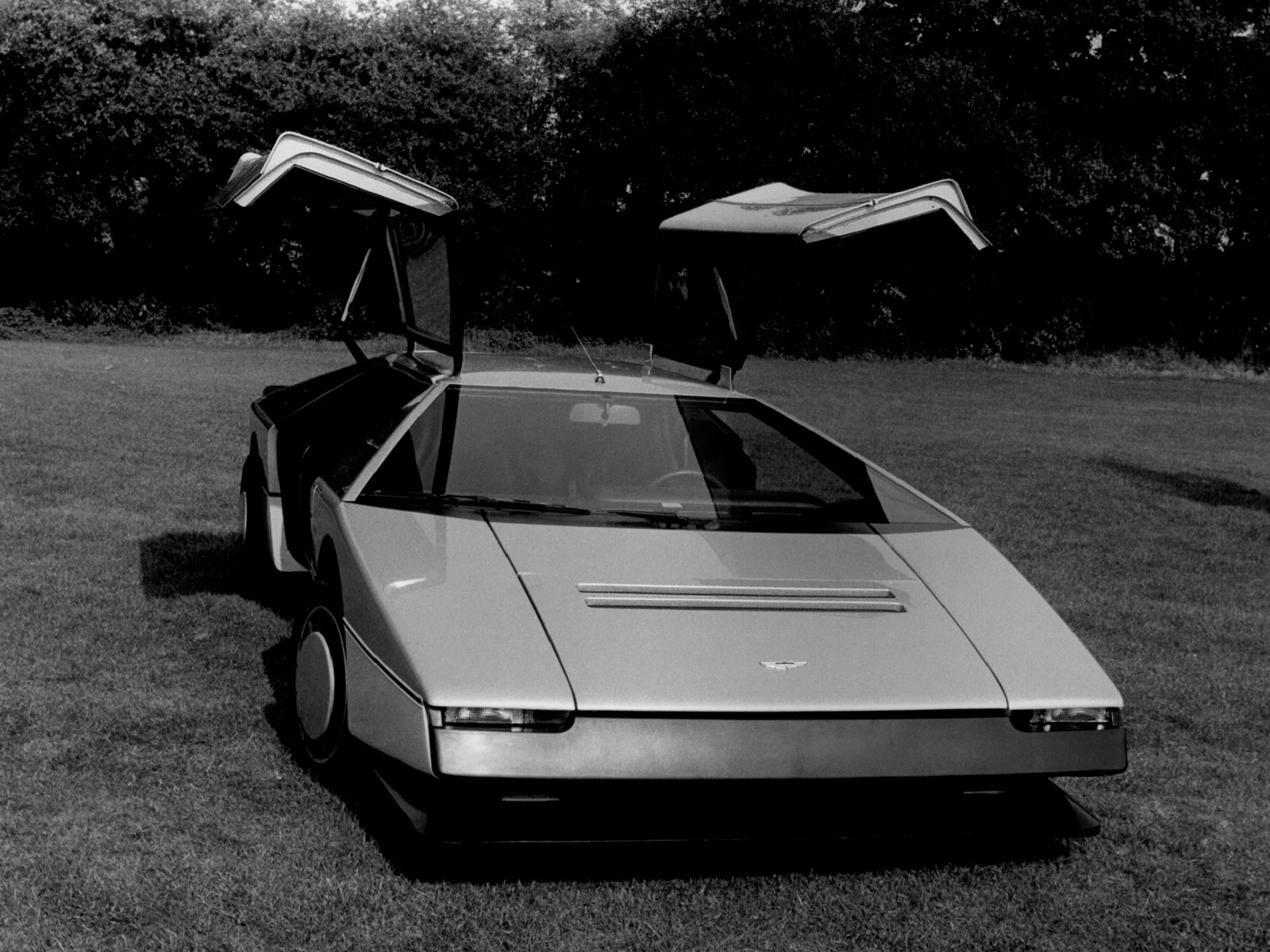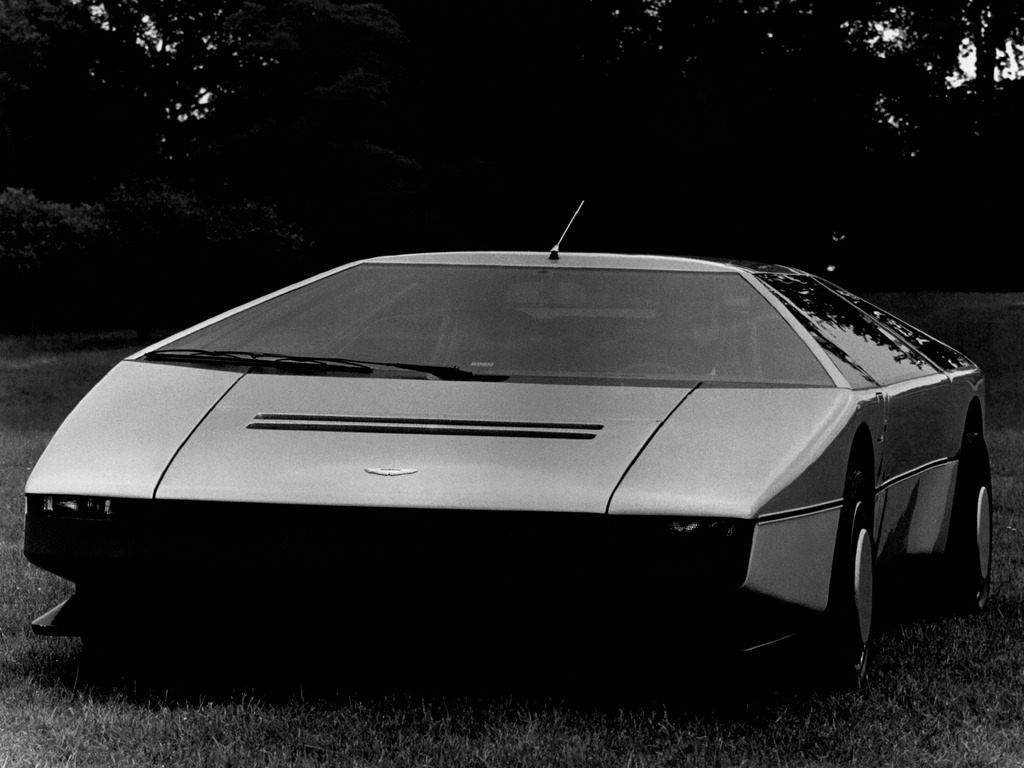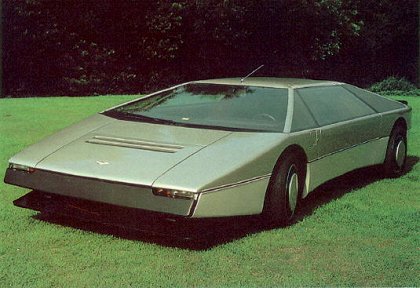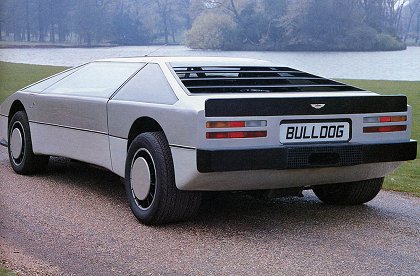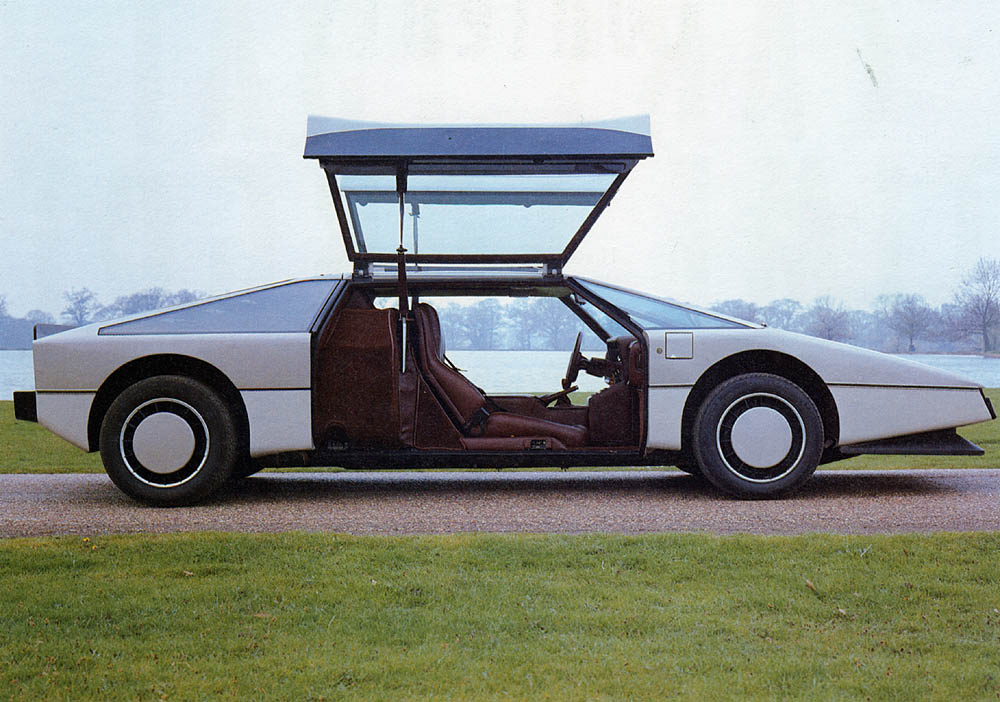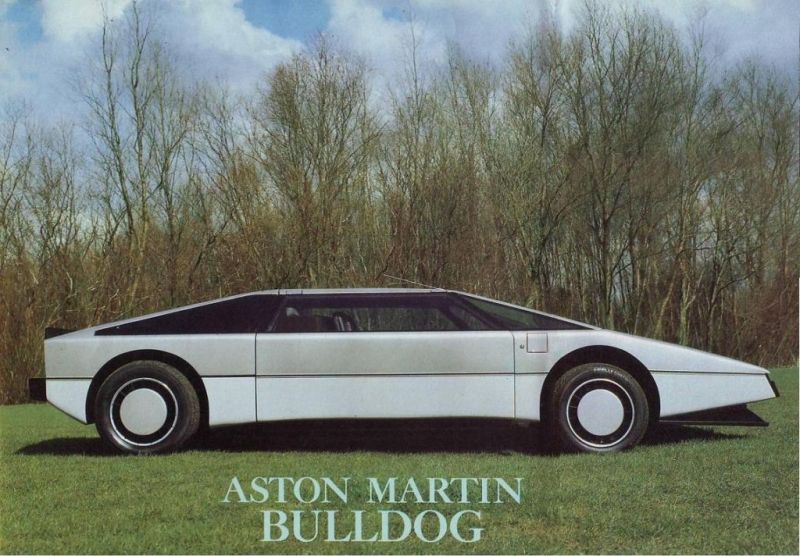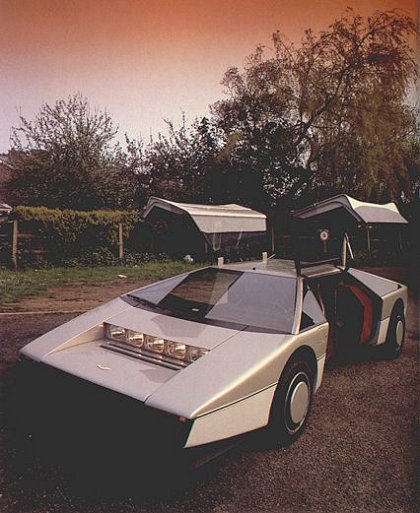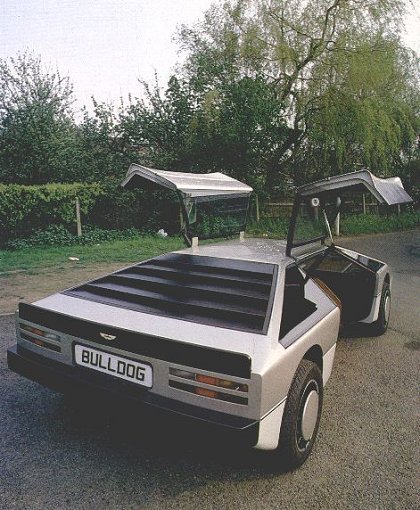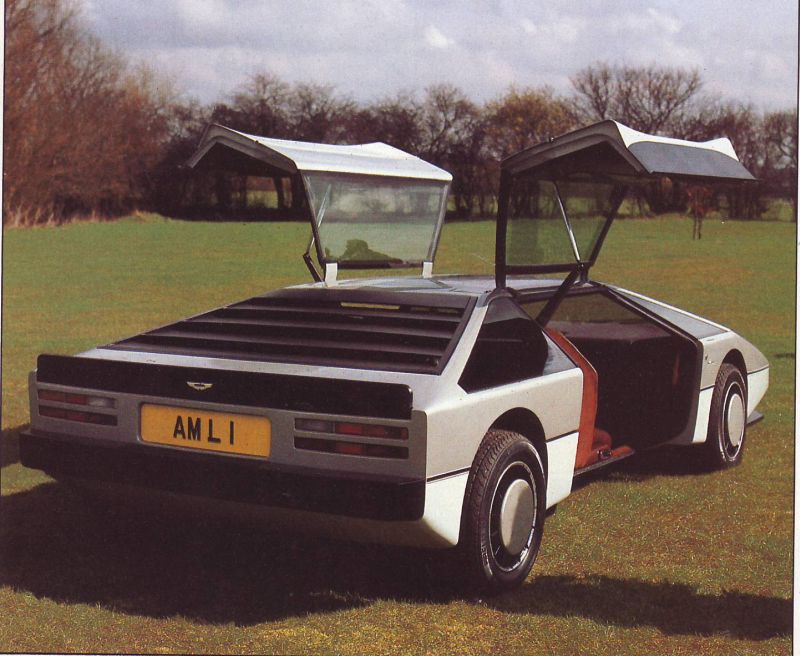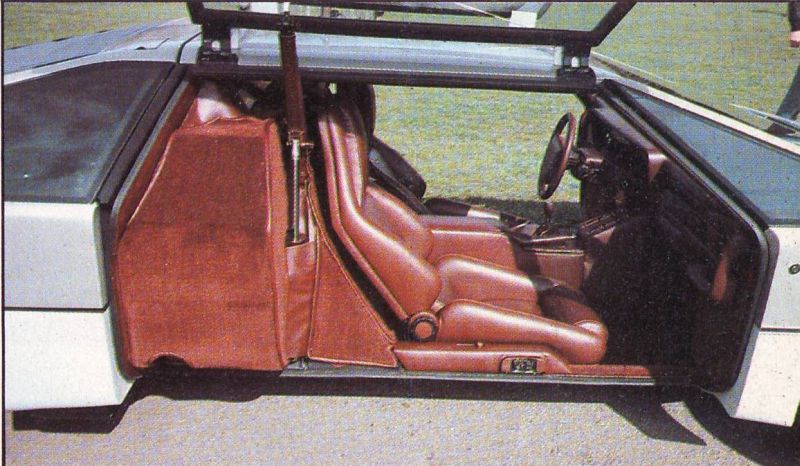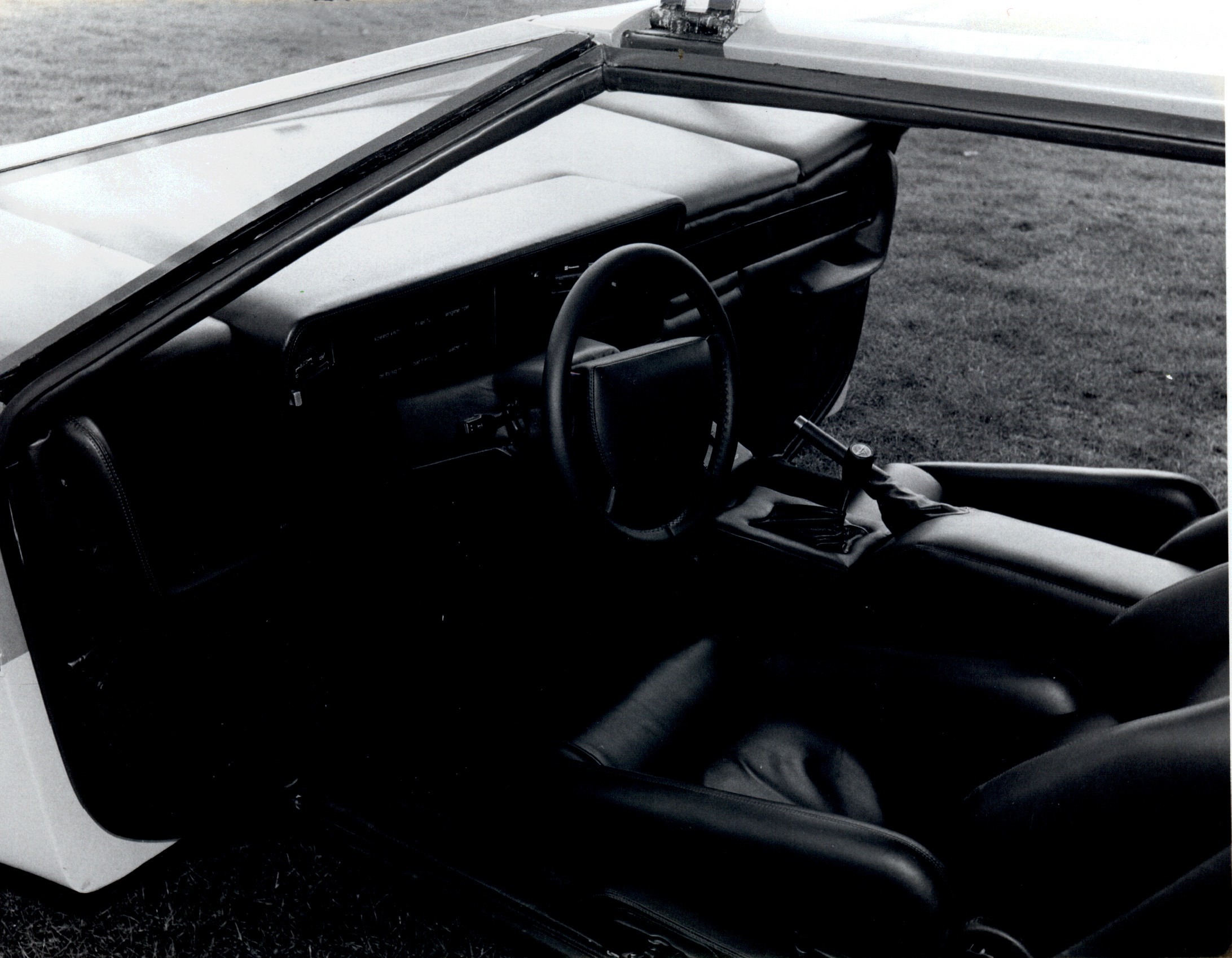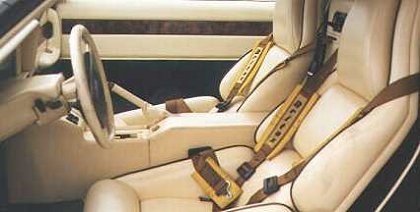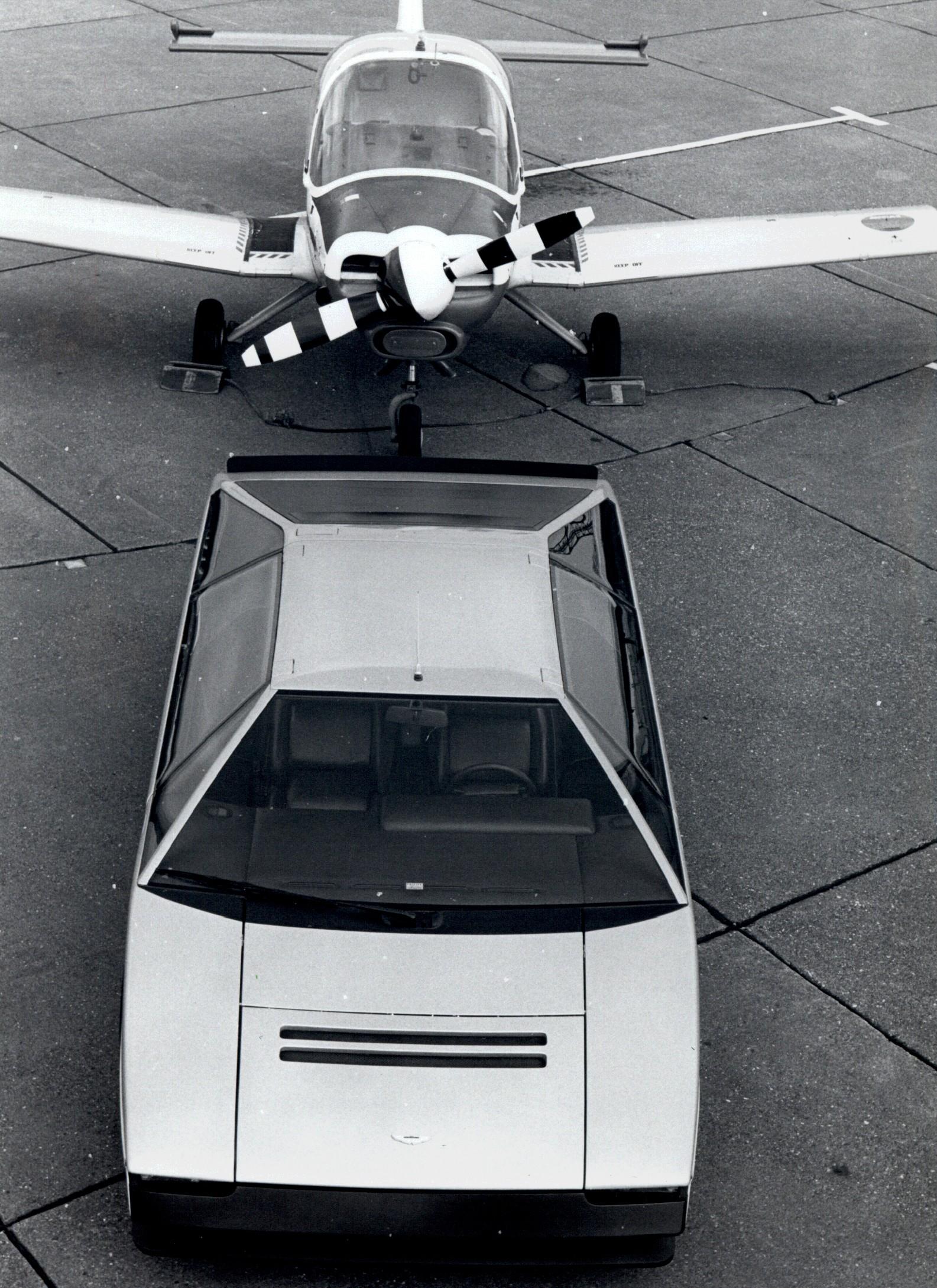The Aston Martin Bulldog, styled by William Towns, was a one-off testbed vehicle produced by Aston Martin in 1979. Originally, it had been intended to be a limited run of about 25. The code name for the project was DP K9, named after a Doctor Who character. It was built in the UK, but is a left-hand-drive car. It is very low at 43 inches (1.1 m) high, and sharp, distinctive Trapezium shaped design, features centre-mounted five hidden headlamps and gull-wing doors. The interior uses digital instrumentation and the rear view is delivered via a television monitor mounted on the centre console. The Bulldog was powered by a 5.3L twin-turbo V8 delivering 700 bhp (522 kW – other source claims 600 bhp/477 kW) maximum power and 69 kg/mm (500 ft?lb/677 Nm) maximum torque.
The first test drive of the Bulldog came in late 1979 and was a great success. The Bulldog achieved a verified top speed of 191 mph (307 km/h), but the theoretical top speed is estimated at 237 mph (381 km/h). The car was officially launched on 27 March 1980 at the Bell Hotel at Aston Clinton. After the development programme was over, Aston Martin sold the only Bulldog to the highest bidder for about £130,000.
The Bulldog spent some time in the United States, but has recently been offered for sale in Britain. It was now green, compared to original exterior colours of silver and light grey. The interior has also been changed from the original dark brown and black to light tan.
Source: Wikipedia
Since 1987 Aston Martin has been positioned safely within Ford’s corporate corral. Yet only twelve years before, in 1975, it had been rescued from bankruptcy by a consortium headed by American company doctor, Peter Sprague, and British entrepreneur, Alan Curtis.
To commemorate this ongoing renaissance and to publicize a newly created external engineering facility, in 1980 the firm unveiled the unique mid-engined Bulldog. It was a concept that enjoyed a mixed reception from the press but generated worldwide publicity for the revitalized company.
Supercar
Chairman Curtis maintained that the Bulldog had been created to show ‘that Aston Martin can build the ultimate roadgoing supercar.’ Its low, angular, wedge-shaped body was the work of William Towns who had already styled the firm’s V8 coupe and futuristic Lagonda saloon.
The car had a protracted gestation. Work began in 1977 under engineering manager, Mike Loasby, but when he left to join the DeLorean operation in Northen Ireland late in 1978, the job was briefly set to one side.
Reactivated early in 1979 under projects manager, Keith Martin, and development engineer, Keith Hallam, it was completed in little over a year. The left-hand-drive Bulldog was finally unleashed on the motoring press in April 1980.
British Bulldog
The Britishness of the name seemed appropriate. It had come about because the car had begun life as DP (for Development Project) K.901. This was shortened to Canine, and so in turn it became Bulldog. The area of Aston Martin’s Newport Pagnell factory where the car ultimately took shape was known, inevitably, as The Kennel.
Unduly wide, angular and low, the Bulldog was just 1092mm (43 in) high, and possessed a drag coefficient of 0.34. Massive hydraulically activated gull-wing doors were fitted and operated by buttons contained under lockable hatches.
Some commentators responded positively to a shape that was totally devoid of decorative features, while others found it excessively bland. Of one thing both parties were agreed: the Bulldog looked like nothing else.
Unlike Aston Martin’s road cars which were front-engined, the 5.3 litre V8, twin-turbocharged in the Bulldog, was mid-located. A tubular chassis was employed with a de Dion rear axle and conventional coils and wishbones at the front.
Aston Martin had been hoping that the car would be able to reach 329 km/h (205 mph) but, in the event, it managed ‘only’ 307 km/h (191 mph).
Unique
Just one example was built. It happily survives, having originally been acquired by an American enthusiast, although this very British Bulldog is now once again kennelled in the country of its birth.
Wood, Jonathan (1997) Concept Cars, Paragon, ISBN 0-75252-084-9.

